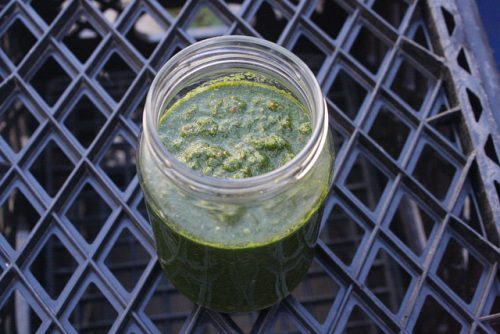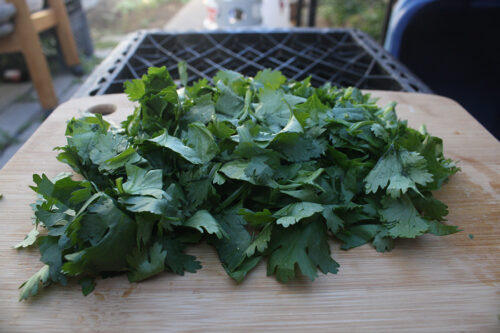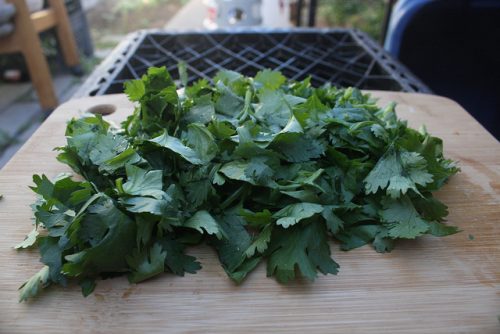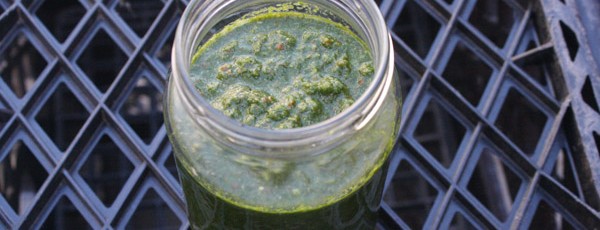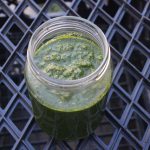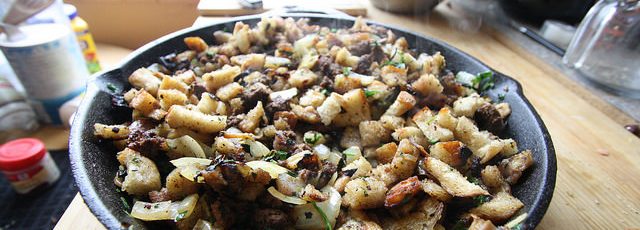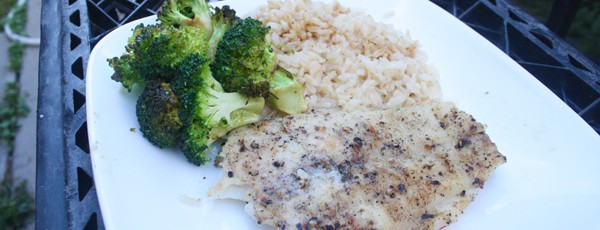Two Recipes for Some Thanksgiving help
Thanksgiving is right around the corner which means, if you have to cook any part of the meal, you’re scrambling for ideas, for ingredients, for menu planning, for drinks, for the whole shebang.
I’ve been there before and I’m going to be there again this year which means I’m scrambling as well.
I know a few parts of the meal ‘m going to be making already. Obviously, there’s the turkey. That’s a given. Then there’s the gravy. (Here’s the full recipe.) That’s something where the majority can be made ahead of time.
Then there’s the stuffing which I rarely stuff inside of the turkey. (I like to put a few lemons, maybe a lime, some apples, maybe an orange, in the bird’s cavity.)
I personally make a sage sausage stuffing with sourdough bread and bake it in the oven. This makes it toasty and more delicious.
There’re two options for the sage sausage. Either, make it yourself or just buy it. When it’s on sale, I buy it. When it’s not, I make it myself with fresh sage which I then dry in the oven.
There you go. Two great options.
I highly suggest you take my advice on the gravy.
Either use the links above or see the recipes below.
Make-ahead turkey giblet gravy
This make-ahead gravy assures there will be plenty for the meal and beyond
Servings: 1 quart
Author: Wheeler Cowperthwaite
- 1/2 cup butter More as required
- 1/2 cup flour More as required
- 5-6 cups water
- Turkey giblets heart, liver, gizzard (Chicken giblets work also)
- 6-10 pepper corns
- 1 Turkey neck
- 2 bay leaves
- 1 carrot
- 1 onion
- Salt to taste
- Turkey pan drippings
- 1-2 cups Optional: 1-2 cups white or red wine More as required for deglazing
- 1-2 cups Optional: Chicken or beef broth
- Optional: 1 celery stick
Put the water in a medium pot on high heat and set to boil.
Add the turkey neck, all giblets (chicken giblets also work), bay leaves and pepper corns to the pot of water.
While the water comes to a boil, cut the carrot and onion into quarters and add to the pot.
When water boils, cover, turn heat on low and simmer for at least 1 hour but preferably for 2 and 1/2 hours or longer. The longer the simmer, the better the stock.
While the stock simmers, either combine the butter and flour in a small bowl or put a skillet on medium heat, put the butter in the skillet and slowly whisk in the flour. Continue to whisk until it begins to turn golden brown. Remove to a separate bowl. This is the roux.
When the stock is done simmering, strain the stock and return to the pot it was simmered in. Add chicken or beef stock, if using.
Remove the turkey neck, heart and liver from the strainer. Remove the meat from the neck and finely mince. Finely mince the heart and liver. Add back to the stock and throw the rest of the material in the strainer away.
Add the roux to the stock. Stir until well combined. Add wine, if desired. Put on low heat and simmer if the gravy is too thin or make and add more roux.
If using turkey and pan drippings: Once the turkey has been removed from the pan, add a little water or wine, depending on how much liquid is in the pan, and deglaze over a medium-high heat, scraping the browned bits from the bottom.
Add the pan drippings to the gravy and stir until well combined. A little more flour may be required to be added.
Freeze or put in the refrigerator if being made significantly ahead of the serving time.
HOMEMADE SAGE SAUSAGE STUFFING
The sage sausage
Ingredients
1 lb ground pork or beef or other ground meat(s)
½ teaspoon ground coriander seeds
1 teaspoon salt
1-3 teaspoons dried, rubbed sage
½ teaspoon black pepper
Directions
If drying fresh sage, put sage leaves on a cooking sheet lined with parchment paper for 1-2 hours at 150-180 degrees Fahrenheit.
Mix the meat and spices, possibly by hand, until well combined.
Refrigerate overnight or cook immediately.
Sage sausage stuffing
Ingredients
8 cups sourdough bread cubes, dime to quarter sized pieces, which is a little under a pound and
half. Rye or whole wheat also make for good stuffing)
1 lb. sage sausage
1 cup bok choy (or other vegetable of one’s choosing, such as celery)
2 chopped medium onions
1-2 cups minced parsley
Directions
Preheat oven to 350 degrees if any of the stuffing is to be baked.
In a large skillet (12 inches), cook the sausage, separating it into quarter-sized pieces. Once it is almost done cooking, remove the sausage into a bowl.
Brown the onions and bok choy (or other vegetables as desired).
Add the sausage back into the skillet, as well as the cubed bread. Mix and continue to cook over medium-high to medium heat, until the bread begins to heat through.
Stuff the turkey with the stuffing or put the stuffing into baking dishes.
If baking the stuffing alone, bake at 350 Fahrenheit for 40 minutes with a tinfoil covering.
Remove the tinfoil covering and continue to bake for 20 minutes.
-
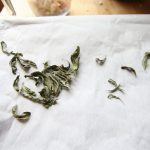
-
Dried sage.
-

-
Laying un-dried sage on parchment paper on baking sheet.
-
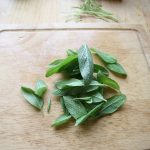
-
Sage getting prepped for oven drying.
-
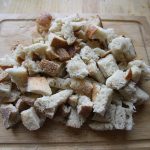
-
Cubed bread.
-

-
Cutting the bread to cube it.
-

-
Bread before it has been cubed.
-
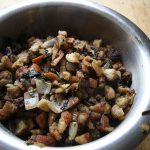
-
Stuffing before it goes into a pan to be baked, after it has been combined with the bread, onions, sausage, parsley.
-
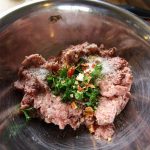
-
All the ingredients that go into the sausage on top of the ground meat. It now must be mixed.
-

-
Chopped parsley.
-

-
Pre-chopping parsley.
-

-
Onion, before it has been chopped.
-
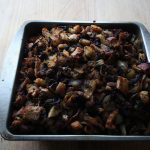
-
Stuffing after being baked. The tin foil covering was taken off during the last few minutes so the top would brown.
-

-
Stuffing before it has been covered in tinfoil and baked. Glass is better than metal because it will not, so easily, burn the underside.
-

-
Stuffing before being placed in the oven. Although cast iron is great for baking, it tends to burn the bottom of the stuffing. Glass is preferred.
-
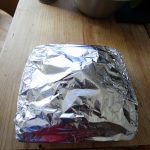
-
Stuffing covered in tin foil before being baked in the oven. The tin foil is taken off during the last few minutes of baking so the top will crisp.
